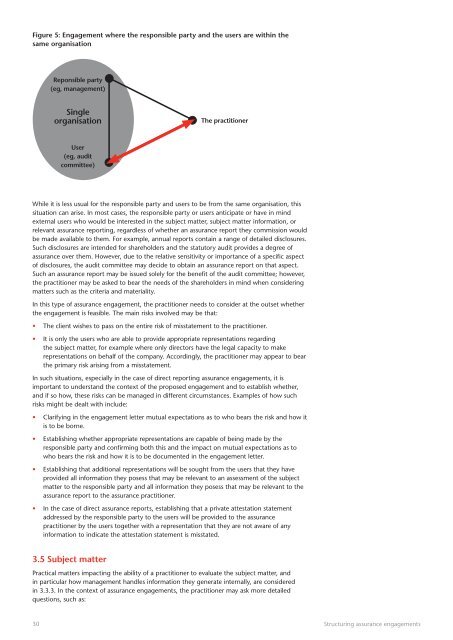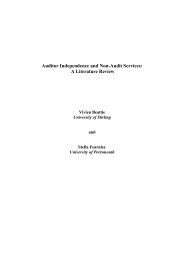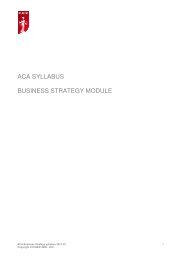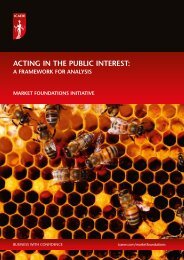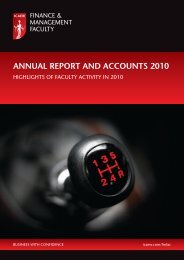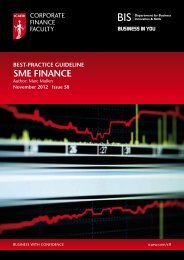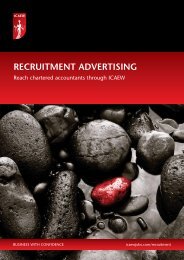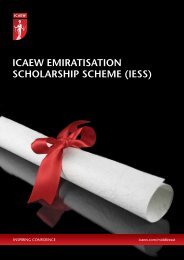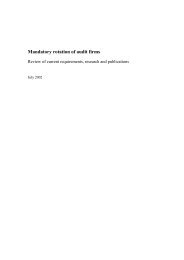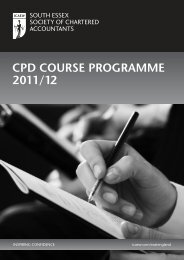Figure 5: Engagement where the responsible party and the users are within thesame organisationReponsible party(eg, management)SingleorganisationThe practitionerUser(eg, auditcommittee)While it is less usual for the responsible party and users to be from the same organisation, thissituation can arise. In most cases, the responsible party or users anticipate or have in mindexternal users who would be interested in the subject matter, subject matter information, orrelevant assurance reporting, regardless of whether an assurance report they commission wouldbe made available to them. For example, annual reports contain a range of detailed disclosures.Such disclosures are intended for shareholders and the statutory audit provides a degree ofassurance over them. However, due to the relative sensitivity or importance of a specific aspectof disclosures, the audit committee may decide to obtain an assurance report on that aspect.Such an assurance report may be issued solely for the benefit of the audit committee; however,the practitioner may be asked to bear the needs of the shareholders in mind when consideringmatters such as the criteria and materiality.In this type of assurance engagement, the practitioner needs to consider at the outset whetherthe engagement is feasible. The main risks involved may be that:• The client wishes to pass on the entire risk of misstatement to the practitioner.• It is only the users who are able to provide appropriate representations regardingthe subject matter, for example where only directors have the legal capacity to makerepresentations on behalf of the company. Accordingly, the practitioner may appear to bearthe primary risk arising from a misstatement.In such situations, especially in the case of direct reporting assurance engagements, it isimportant to understand the context of the proposed engagement and to establish whether,and if so how, these risks can be managed in different circumstances. Examples of how suchrisks might be dealt with include:• Clarifying in the engagement letter mutual expectations as to who bears the risk and how itis to be borne.• Establishing whether appropriate representations are capable of being made by theresponsible party and confirming both this and the impact on mutual expectations as towho bears the risk and how it is to be documented in the engagement letter.• Establishing that additional representations will be sought from the users that they haveprovided all information they posess that may be relevant to an assessment of the subjectmatter to the responsible party and all information they posess that may be relevant to theassurance report to the assurance practitioner.• In the case of direct assurance reports, establishing that a private attestation statementaddressed by the responsible party to the users will be provided to the assurancepractitioner by the users together with a representation that they are not aware of anyinformation to indicate the attestation statement is misstated.<strong>3.</strong>5 Subject matterPractical matters impacting the ability of a practitioner to evaluate the subject matter, andin particular how management handles information they generate internally, are consideredin <strong>3.</strong><strong>3.</strong><strong>3.</strong> In the context of assurance engagements, the practitioner may ask more detailedquestions, such as:30Structuring assurance engagements
• How well developed is management control over the subject matter?• What degree of documentation is available regarding the subject matter?• What is the most cost effective way to address the needs of the users and achieve anappropriate degree of credibility over the subject matter?Depending on these factors, an assurance engagement may focus on a different aspect oraspects of a subject matter or subject matter information, such as:• Fairness of description of the subject matter or criteria in place.• Design of processes where relevant (eg, business activities, control procedures).• Operating effectiveness of processes where relevant.• Outcome (eg in terms of the compilation or calculation of data outcomes based on inputdata and processes used).• A comprehensive report (eg, a report that may include elements of all of the above with anoverall view of the subject matter from management).In addition, the focus of an assurance engagement will depend on matters such as user needs,suitable criteria and the availability of evidence. For example, the engaging party may beinterested in the financial performance of an organisation. The subject matter information may,as in a financial statement audit, be the numerical information which is the outcome of thefinancial performance. It is equally possible that management is interested in the organisation’sfinancial reporting process and asks the practitioner to evaluate its report on internal controlprocesses. For example, in the case of greenhouse gas emissions, management may choose toask the practitioner to focus on:• the fairness of the description on its policy and method of measuring the emissions;• the design effectiveness of the emission measurement procedures;• the effective operation of the emission measurement procedures;• the accuracy of the measurement of the emissions; or• the emissions report.As stated in <strong>3.</strong><strong>3.</strong>3, the maturity of the organisation’s arrangements can have a significantimpact on the nature of what the practitioner can give an assurance conclusion on.For example, an engagement that focuses solely on controls and processes may lend credibilityto how the input data or transactions are processed, but does not directly give any assuranceconclusion on the data or outcomes. However, an engagement that focuses solely on substantiveevidence and the evaluation of data or outcomes says little as to the reliability of the underlyingsystems of control or the robustness or sustainability of the processes involved. Accordingly it isimportant for the practitioner to understand both the brief from the engaging party as well asthe needs of the users.At times this can mean that practicalities prevent the users’ needs from being fully met. Forexample, a user may be ultimately interested in obtaining assurance on the data or outcome.The relevant data may be calculated by processes that are well documented and capable ofbeing tested for design and operating effectiveness. Where obtaining the input data may beextremely difficult or disproportionately costly, assurance over the output data may not bepractical. However, it may still be possible to evaluate the design and the operating effectivenessof the processes for calculating the output data, combined with a limited sample of input andoutput data reconciliation. This may be sufficient for the users’ needs in the first instance.An example is provided by the development of assurance reporting on stewardship. Assuranceguidance developed in conjunction with stakeholders was issued as a supplement to AAF 01/06,Guidance on assurance reports on internal controls of service organisations. While AAF 01/06 coversthe fairness of description, design suitability and operating effectiveness of internal controls,the subsequent stewardship supplement to AAF 01/06 focuses on the fairness of descriptionof stewardship compliance by asset managers. The reduced scope was considered appropriateas this was a new subject matter and it is hoped that subsequent reports may cover design andoperating effectiveness as this type of reporting develops over time.The nature of the subject matter also affects what may be important in the context of deliveringthe assurance engagement. For example, in <strong>3.</strong><strong>3.</strong>3 we considered the various stages of managementresponsibility, but these are not discrete stages. For example, compare two potential assuranceengagements: one relating to assurance over data; another concerning regulatory mattersStructuring assurance engagements31


